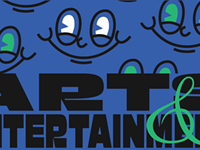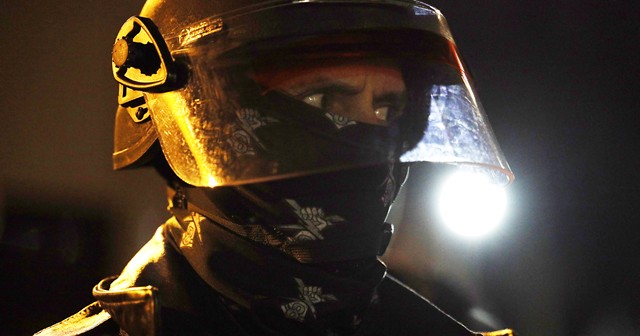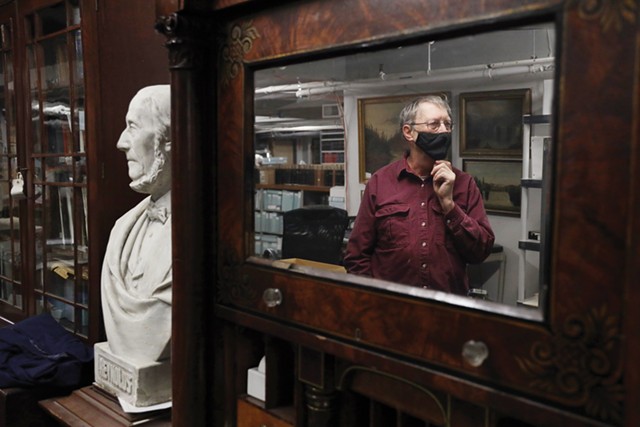[
{
"name": "500x250 Ad",
"insertPoint": "5",
"component": "15667920",
"parentWrapperClass": "",
"requiredCountToDisplay": "1"
}
]
CITY wants to hear you rant and rave.
Your feedback must:
• be no more than 250 words
• respond to CITY content
• be engaging
CITY reserves the right to edit for accuracy, length, and readability.
Send your rants and raves to: [email protected] or
CITY (ATTN: Feedback)
280 State St.
Rochester, NY 14614
‘LOST YEAR’ WASN’T LOST ON THIS TEACHER
I just wanted to share my appreciation for the beautifully written “Our Lost Year” article and its subsections in the March edition of CITY.
CITY has always been a source of local pride and joy for me, while also at times stirring the pot of controversy. When I saw the cover page of this most recent issue, I was curious as to how the year would be presented with so much going on. The article was presented in such a matter-of-fact way with no bias! Even in history books, events are often presented in a biased manner, but this article was not. This article should be what is presented in our future history books.
As a high school teacher, I am eager to share that this is among another CITY article I will be having my students read, analyze, and reflect on.
Thanks to all who worked on and put together this amazing piece. I am truly blown away!
Alexa Cunningham, Webster
POLICE, PROTESTERS NEED TO TALK
Thank you for your report debunking the allegations that some Rochester police officers are wearing white power symbols on their uniforms (“No, those RPD officers were not wearing neo-Nazi symbols,” Feb. 26, online).
The deaths of Daniel Prude and George Floyd, and other recorded interactions between police and civilians, have caused much distrust of law enforcement in our community and many communities around the country for good reason. Accusing police of something so outrageous as wearing white power symbols in plain view detracts from legitimate complaints about policing.
For their part, police could do a better job of talking to their accusers. The video that accompanied the story showed a shouting match between protesters and police over the insignia in question. Protesters complained that the symbol was a “neo-Nazi sign.” A commanding officer replied, “No it isn’t.” Then the conversation, if it could be called that, went on like that and grew more and more heated.
Things might have gone smoother and tempers might not have flared had the commander just explained the history of the symbol to the protester and why the officer was wearing it. Instead, it took CITY to explain it.
Jeffrey Whittaker, Rochester
DEEP DIVE WAS REFRESHING
I really appreciated Steve Orr’s in-depth article in the March edition of CITY about the vagaries of the Rochester Historical Society and its attempts to stay afloat (“History in the unmaking”). Articles like this, which go beyond the headlines, are a great journalistic resource.
One thing missing from the article is that Carolyn Vacca, the president of the Rochester Historical Society and a professor at St. John Fisher College, is also the Monroe County historian. Her long service in this position gives her an abundance of insight into the workings of museums and archives in our area.
Lisa Jadwin, Rochester
HISTORICAL SOCIETY IS A TREASURE
The Rochester Historical Society has been a part of the fabric of the Rochester community for over 100 years. While we may be a bit frayed around the edges, as noted in the recent CITY article (“History in the unmaking”), with a little tender loving care, we can continue to provide a link to this area’s past for decades to come.
We fear the article may have left some readers with the impression that RHS is under investigation. We need to clarify that RHS is not under investigation. This has been verified by both the state historian and the president of the Museum Association of New York.
More importantly, we would like to share some of our good news! As part of our long-term strategic plan, we recently refreshed our web site, rochesterhistory.org, and hope to make more of our collection available online for viewing, education and research if and when financial and volunteer resources materialize in the future.
With the waning of the pandemic, we’ll soon be able to establish regular, if minimal, hours of operation. In the meantime, RHS can be accessed by appointment.
Unlike many historical societies throughout New York, including Syracuse and Buffalo, RHS receives no public funding — not from the state, the county, or the city.
The funds to cover our bare bones operating expenses flow primarily from donations. As the recent article pointed out, that leaves us in a somewhat precarious financial situation — a reality shared by many not-for-profit organizations.
As noted in the article, we continue to carefully evaluate our collections and weed out items which lack historical relevance to the Rochester area. This process is akin to clearing out a grandparent’s attic. But we cannot simply cull unwanted items by holding a garage sale or giving friends items they may like. Rather, using a deliberate process detailed in our collections policy and consistent with New York regulations, we identify articles that may be duplicates or are unrelated to our mission. We then contract with auctioneers to sell these items. This process is not to make money, but to ensure our collections are relevant and reflect our purpose and mission. This is a standard best practice for any museum.
However, there is current debate among elite art museums regarding selling pieces to generate operating funds.
While this periodic purging has mostly been on hold during the pandemic, we have a responsibility to continue assessing our collections to ensure we have room for future donations chronicling our lives in the 20th and 21st centuries.
We hope that you will take this opportunity to join us in our efforts to stitch together the threads of the “Rochester tapestry” and preserving it for future generations!
RHS Board of Trustees
Your feedback must:
• be no more than 250 words
• respond to CITY content
• be engaging
CITY reserves the right to edit for accuracy, length, and readability.
Send your rants and raves to: [email protected] or
CITY (ATTN: Feedback)
280 State St.
Rochester, NY 14614
‘LOST YEAR’ WASN’T LOST ON THIS TEACHER
I just wanted to share my appreciation for the beautifully written “Our Lost Year” article and its subsections in the March edition of CITY.
CITY has always been a source of local pride and joy for me, while also at times stirring the pot of controversy. When I saw the cover page of this most recent issue, I was curious as to how the year would be presented with so much going on. The article was presented in such a matter-of-fact way with no bias! Even in history books, events are often presented in a biased manner, but this article was not. This article should be what is presented in our future history books.
As a high school teacher, I am eager to share that this is among another CITY article I will be having my students read, analyze, and reflect on.
Thanks to all who worked on and put together this amazing piece. I am truly blown away!
Alexa Cunningham, Webster
POLICE, PROTESTERS NEED TO TALK
Thank you for your report debunking the allegations that some Rochester police officers are wearing white power symbols on their uniforms (“No, those RPD officers were not wearing neo-Nazi symbols,” Feb. 26, online).
The deaths of Daniel Prude and George Floyd, and other recorded interactions between police and civilians, have caused much distrust of law enforcement in our community and many communities around the country for good reason. Accusing police of something so outrageous as wearing white power symbols in plain view detracts from legitimate complaints about policing.
For their part, police could do a better job of talking to their accusers. The video that accompanied the story showed a shouting match between protesters and police over the insignia in question. Protesters complained that the symbol was a “neo-Nazi sign.” A commanding officer replied, “No it isn’t.” Then the conversation, if it could be called that, went on like that and grew more and more heated.
Things might have gone smoother and tempers might not have flared had the commander just explained the history of the symbol to the protester and why the officer was wearing it. Instead, it took CITY to explain it.
Jeffrey Whittaker, Rochester
DEEP DIVE WAS REFRESHING
I really appreciated Steve Orr’s in-depth article in the March edition of CITY about the vagaries of the Rochester Historical Society and its attempts to stay afloat (“History in the unmaking”). Articles like this, which go beyond the headlines, are a great journalistic resource.
One thing missing from the article is that Carolyn Vacca, the president of the Rochester Historical Society and a professor at St. John Fisher College, is also the Monroe County historian. Her long service in this position gives her an abundance of insight into the workings of museums and archives in our area.
Lisa Jadwin, Rochester
HISTORICAL SOCIETY IS A TREASURE
The Rochester Historical Society has been a part of the fabric of the Rochester community for over 100 years. While we may be a bit frayed around the edges, as noted in the recent CITY article (“History in the unmaking”), with a little tender loving care, we can continue to provide a link to this area’s past for decades to come.
We fear the article may have left some readers with the impression that RHS is under investigation. We need to clarify that RHS is not under investigation. This has been verified by both the state historian and the president of the Museum Association of New York.
More importantly, we would like to share some of our good news! As part of our long-term strategic plan, we recently refreshed our web site, rochesterhistory.org, and hope to make more of our collection available online for viewing, education and research if and when financial and volunteer resources materialize in the future.
With the waning of the pandemic, we’ll soon be able to establish regular, if minimal, hours of operation. In the meantime, RHS can be accessed by appointment.
Unlike many historical societies throughout New York, including Syracuse and Buffalo, RHS receives no public funding — not from the state, the county, or the city.
The funds to cover our bare bones operating expenses flow primarily from donations. As the recent article pointed out, that leaves us in a somewhat precarious financial situation — a reality shared by many not-for-profit organizations.
As noted in the article, we continue to carefully evaluate our collections and weed out items which lack historical relevance to the Rochester area. This process is akin to clearing out a grandparent’s attic. But we cannot simply cull unwanted items by holding a garage sale or giving friends items they may like. Rather, using a deliberate process detailed in our collections policy and consistent with New York regulations, we identify articles that may be duplicates or are unrelated to our mission. We then contract with auctioneers to sell these items. This process is not to make money, but to ensure our collections are relevant and reflect our purpose and mission. This is a standard best practice for any museum.
However, there is current debate among elite art museums regarding selling pieces to generate operating funds.
While this periodic purging has mostly been on hold during the pandemic, we have a responsibility to continue assessing our collections to ensure we have room for future donations chronicling our lives in the 20th and 21st centuries.
We hope that you will take this opportunity to join us in our efforts to stitch together the threads of the “Rochester tapestry” and preserving it for future generations!
RHS Board of Trustees
Latest in Feedback
More by CITY STAFF
-

Meet CITY's new arts writer: Patrick Hosken
Apr 1, 2024 -

Constant cravings
Mar 8, 2024 -

Best Of Rochester: Arts & Entertainment
Jan 10, 2024 - More »






